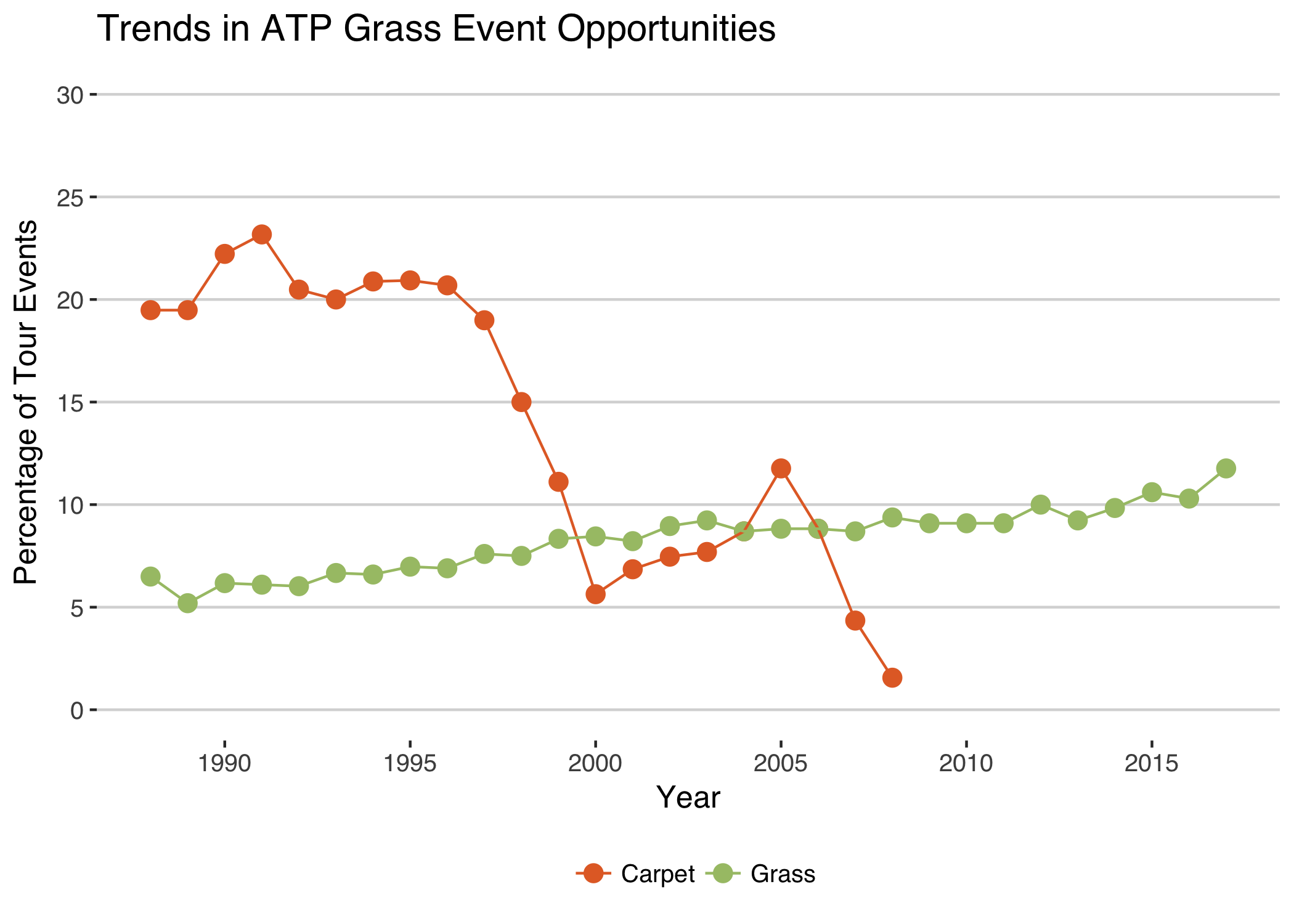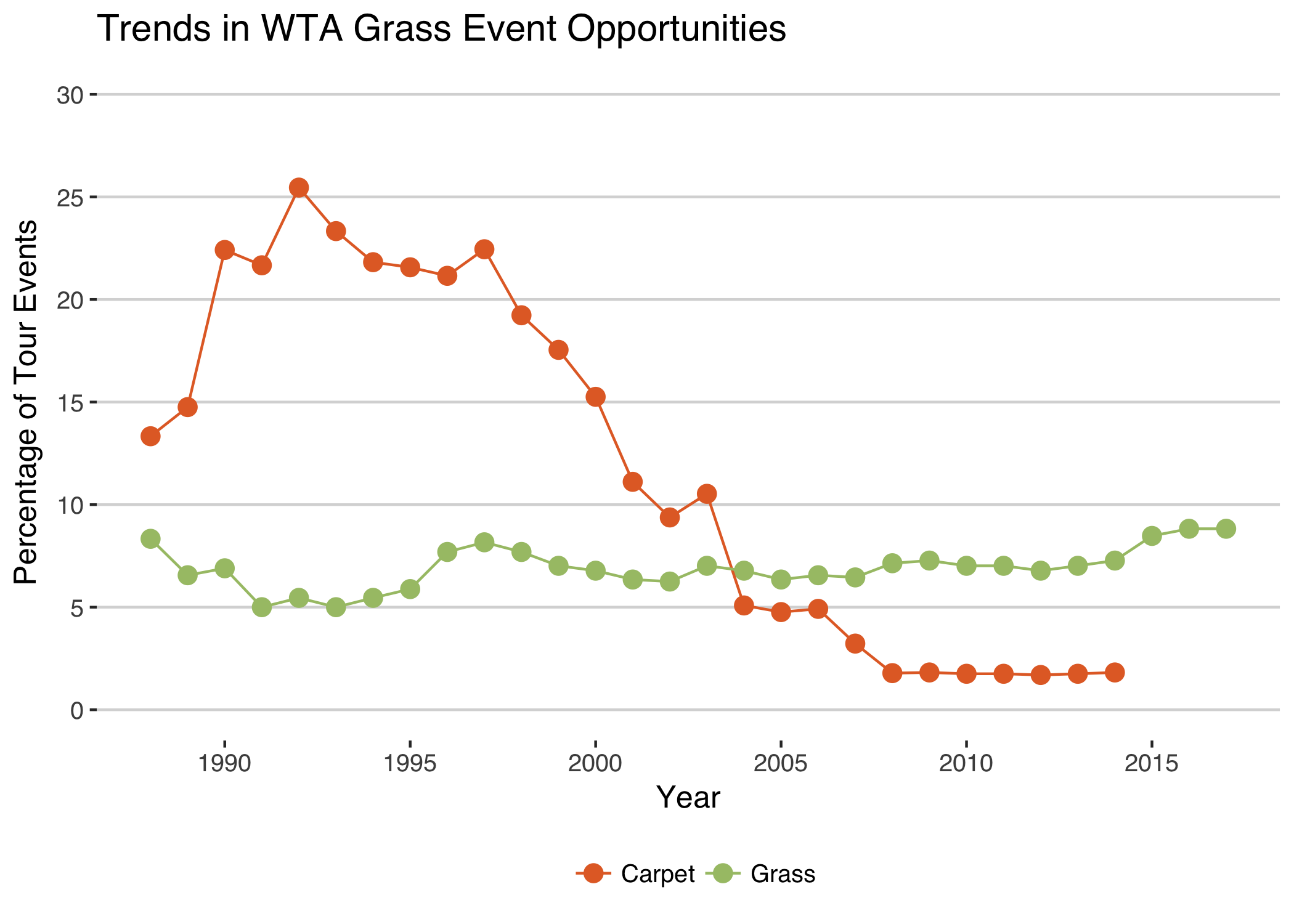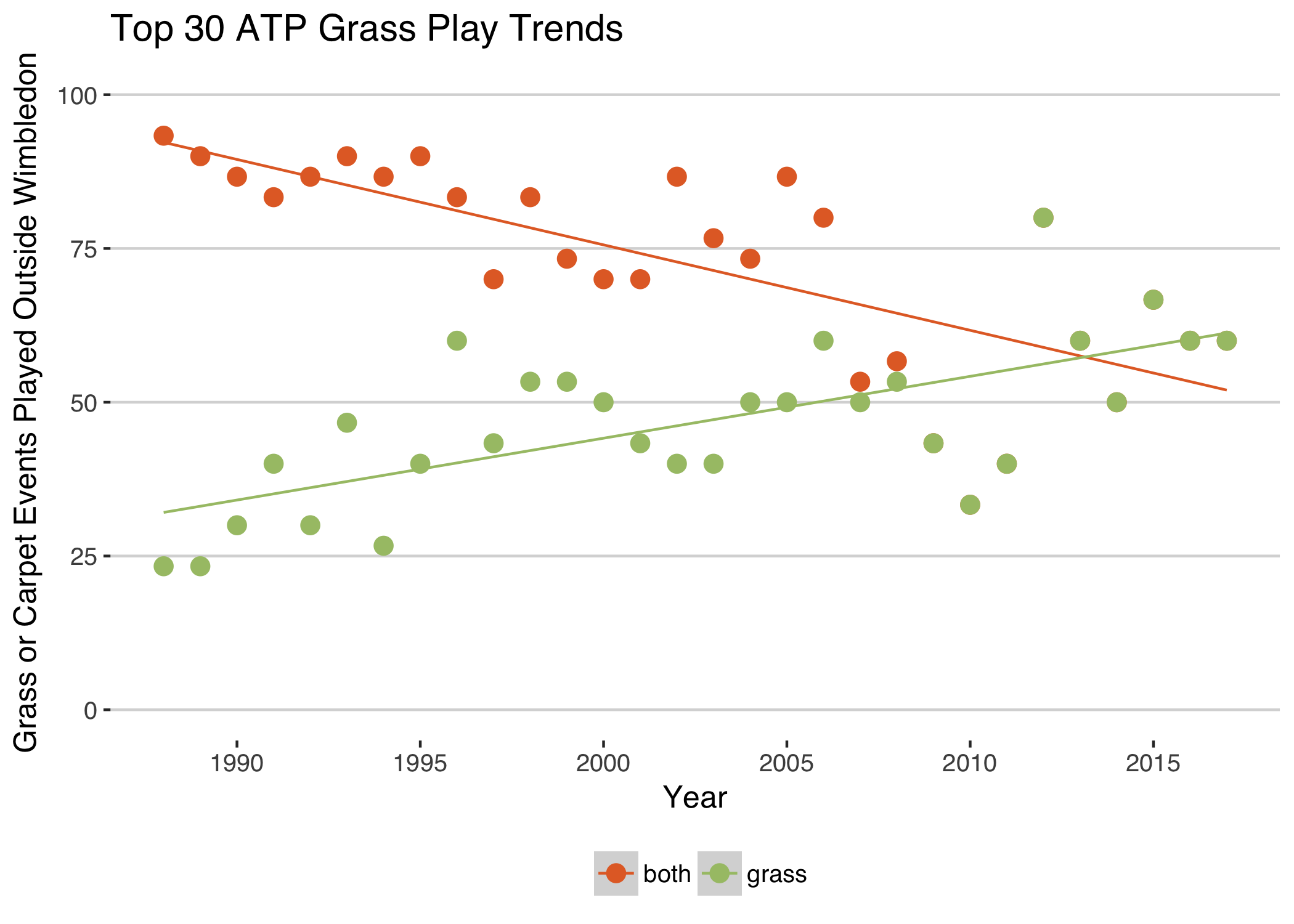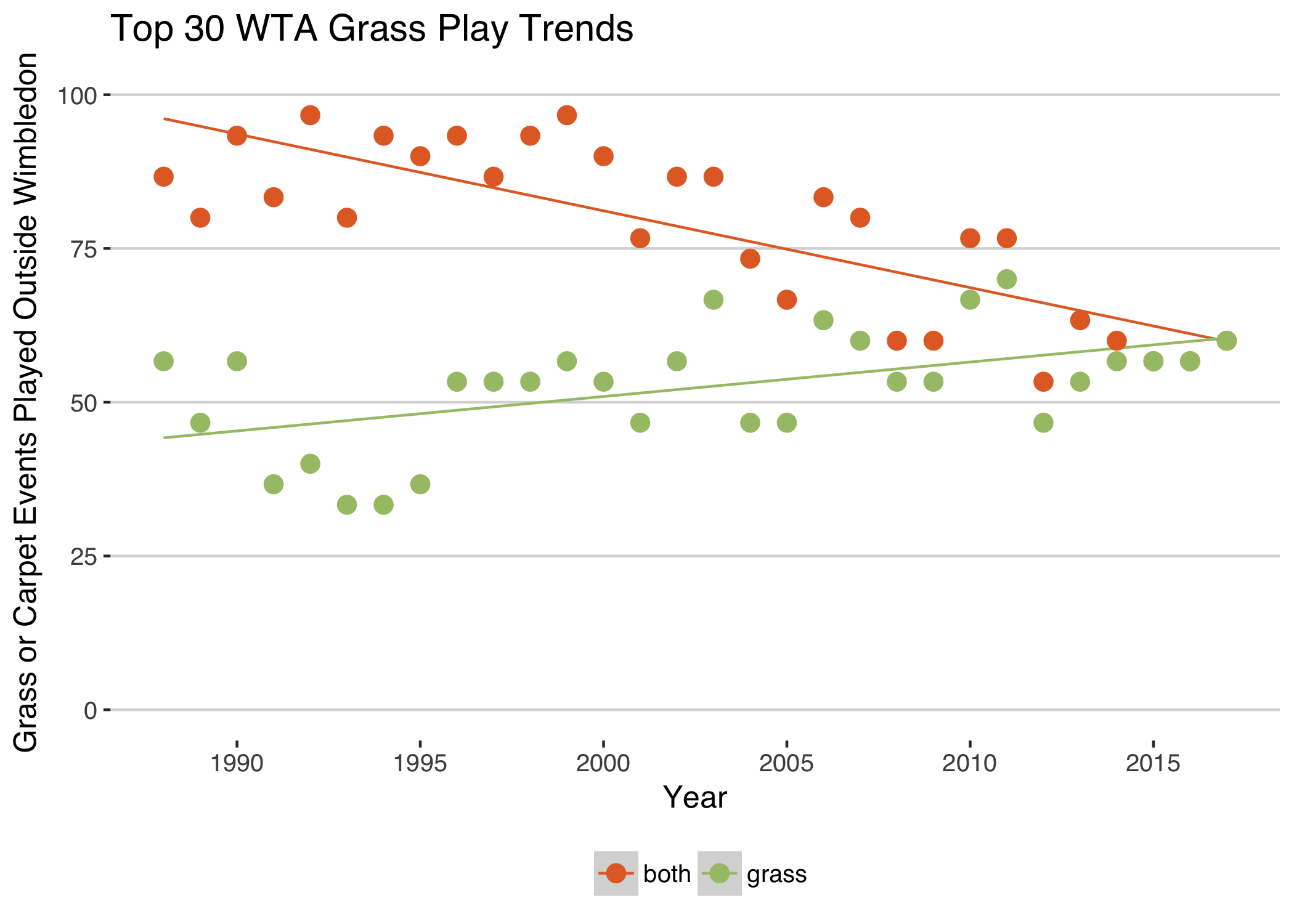Is Carpet to Blame for an Unpredictable Grass Court Season?
Many are still trying to get their heads around the poor showing of top players at the 2018 Wimbledon. In this post we look at what role the number of opportunities to play on grass might have had.
Recently, I came across an interesting grass stat. When Thomas Muster became World No. 1 in 1996 after winning the French Open the year before he had, up to that point, never one a single professional match on grass outside of Davis Cup. Not one!
It is a striking reminder that even the best professional players can’t simply move from one surface to another and expect the same results, particularly a clay court specialist going to grass. Which got me thinking whether changes in the grass court season were a factor with the seeming rustiness of top players at this year’s Wimbledon.
If you looked just at the percentage of grass tour-level events on the ATP calendar you would see that they have actually increased 5 to 12% since the early 90s. That would seem to go against the theory that the grass season has gotten squeezed out over time. But it turns out that you can’t assess the grass season without considering carpet.

Carpet was one of the major surfaces in professional tennis up until the late 1990s, making up 20% of events back then. And, importantly for this discussion, it was fast; considered to be second fastest in pace to grass, in fact.
When carpet went into disuse by tournaments, grass events increased somewhat but nowhere near the former levels of grass and carpet combined. Instead more hard court events took the place where carpet was previously played.
That trend is event starker for the women’s tour, where players had 30% of events on grass or carpet in the 90s and now have less than 10% to choose from during the season.

Opportunities are one thing. What is actually played is another. Has the death of carpet and the limited number of grass opportunities actually resulted in less play on the fastest surfaces?
Outside of Wimbledon, the top 30 ATP players are actually playing more on grass overall. But, again, the impact of carpet can’t be ignored. In the 90s, playing on grass or carpet was a certainty for top players. Because carpet is out and grass events didn’t fill the void, as much as 30% of top players aren’t playing grass or carpet other than at Wimbledon.

On the women’s side that number is closer to 50% for top players. So even fewer of the best female players would have had some competitive play on grass going into recent Wimbledons compared to the best male players.

If tennis wants more consistent performance at the most prestigious event of the calendar, extending the grass court season may have to be the way forward.

